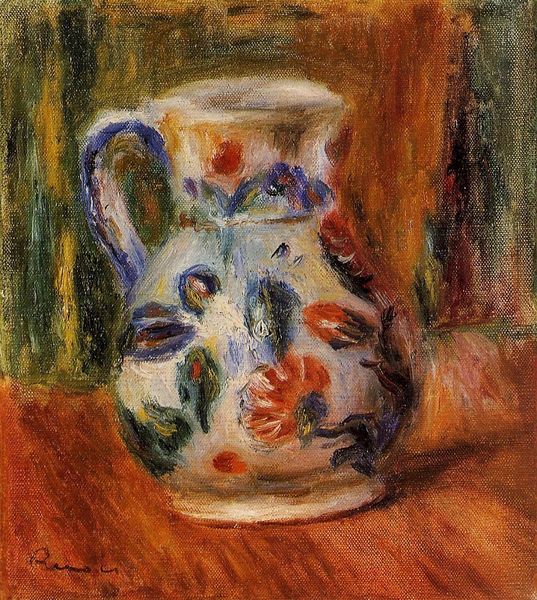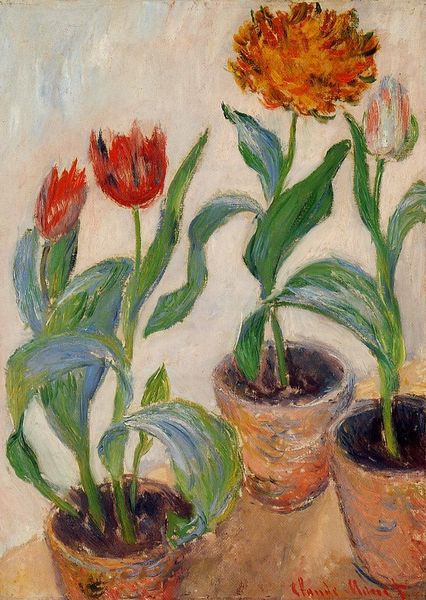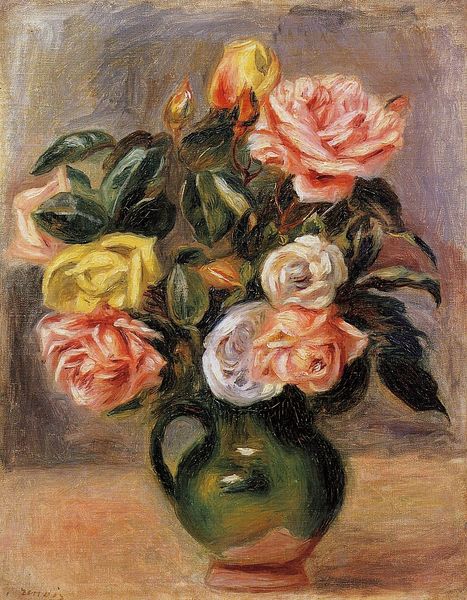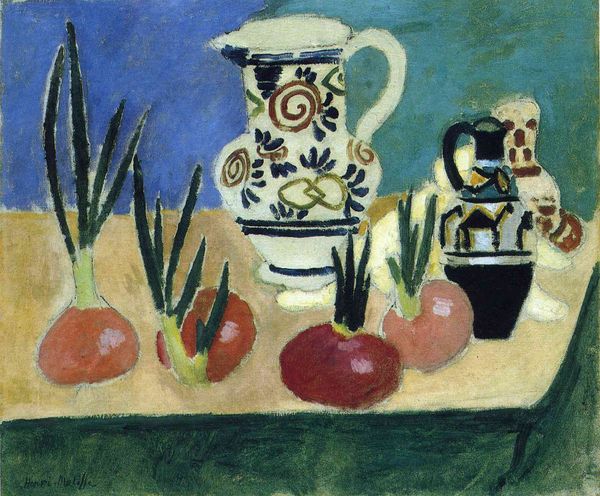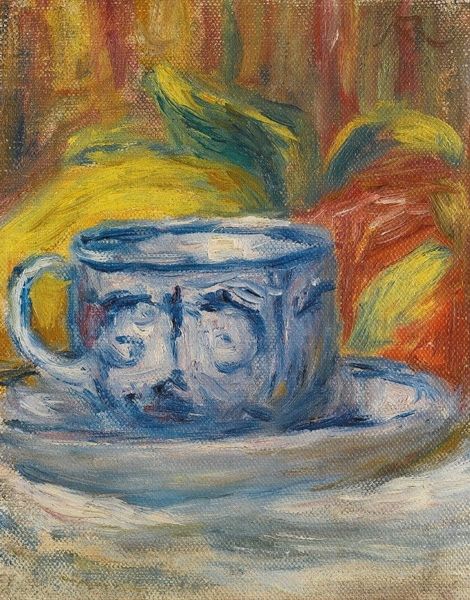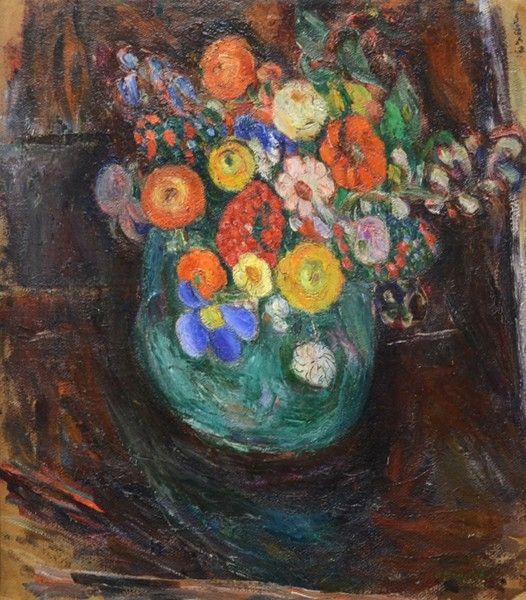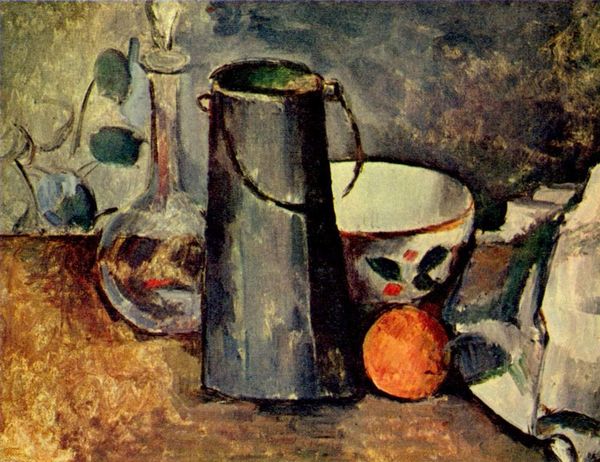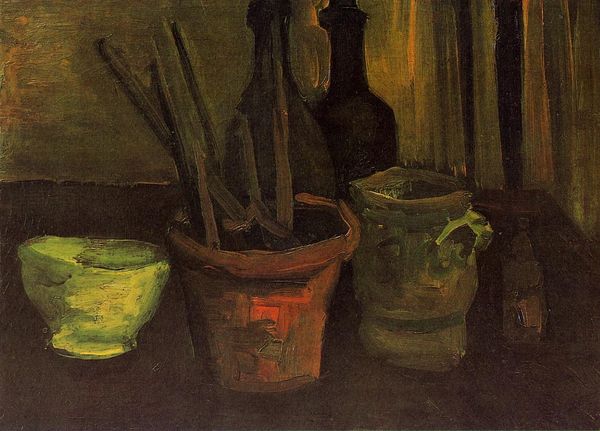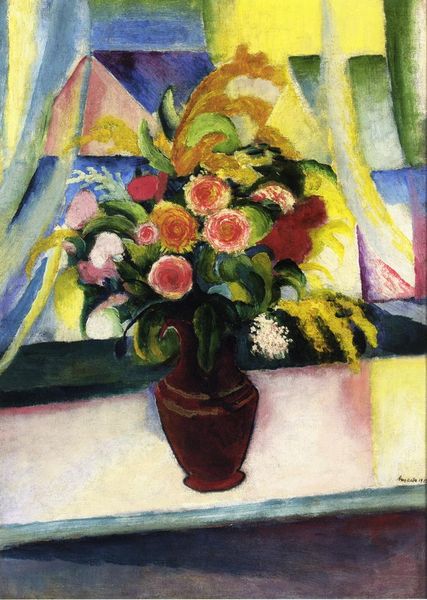
Copyright: Public domain US
Curator: Picasso's "Exotic Flowers," dating to 1907. What a startling chromatic tension. Editor: It strikes me as strangely unsettling, though superficially simple. The dark, almost violently applied strokes in the foreground jar against the delicacy of the flora. It feels… raw. Curator: Precisely! Notice how the rapid, gestural application of oil paint destabilizes conventional representation. The flowers are, nominally, flowers, but the thick impasto transforms them into objects in themselves. The stripes on the vessel also create that dynamism, eschewing any naturalistic tendency in the painting. Editor: That striped vessel, though... Doesn't it point to something quite mundane, a simple domestic container elevated by the artistic act? What’s the context there – was Picasso deliberately choosing ordinary, readily available materials to disrupt traditional notions of value and the exotic? Was this merely the handiest receptacle? Curator: The semiotic play, as you point out, operates precisely through this juxtaposition! The 'exotic' blooms are contained within something pedestrian, a subversion that challenges the very notion of exoticism and what defines it. Consider the function of color itself: is the overall palette reinforcing an intended narrative? Editor: I keep returning to the texture of the paint itself, which feels crucial. The way it is hastily put to work is rather conspicuous... Curator: Indeed. The visibly worked surface disrupts the illusionistic space, foregrounding the act of painting. It refuses the viewer passive consumption of the image. Editor: Ultimately, the work speaks of the materials themselves, cheap paint worked hard on canvas with casual arrangements. One finds him turning away from beauty and craft and, in so doing, pointing to production as itself the focus of aesthetic experience. Curator: Exactly, and within that act of representation, lies an engagement of material reality. "Exotic Flowers," in essence, epitomizes early modernism's disruption of illusion and an investigation of its constituent parts. Editor: It certainly does throw the traditional symbolism associated with still life into sharp relief, prompting one to examine the everyday circumstances in which art is born.
Comments
No comments
Be the first to comment and join the conversation on the ultimate creative platform.
